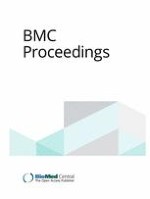Erschienen in:

Open Access
01.10.2016 | Proceedings
Comparing performance of non–tree-based and tree-based association mapping methods
verfasst von:
Katherine L. Thompson, David W. Fardo
Erschienen in:
BMC Proceedings
|
Sonderheft 7/2016
Einloggen, um Zugang zu erhalten
Abstract
A central goal in the biomedical and biological sciences is to link variation in quantitative traits to locations along the genome (single nucleotide polymorphisms). Sequencing technology has rapidly advanced in recent decades, along with the statistical methodology to analyze genetic data. Two classes of association mapping methods exist: those that account for the evolutionary relatedness among individuals, and those that ignore the evolutionary relationships among individuals. While the former methods more fully use implicit information in the data, the latter methods are more flexible in the types of data they can handle. This study presents a comparison of the 2 types of association mapping methods when they are applied to simulated data.